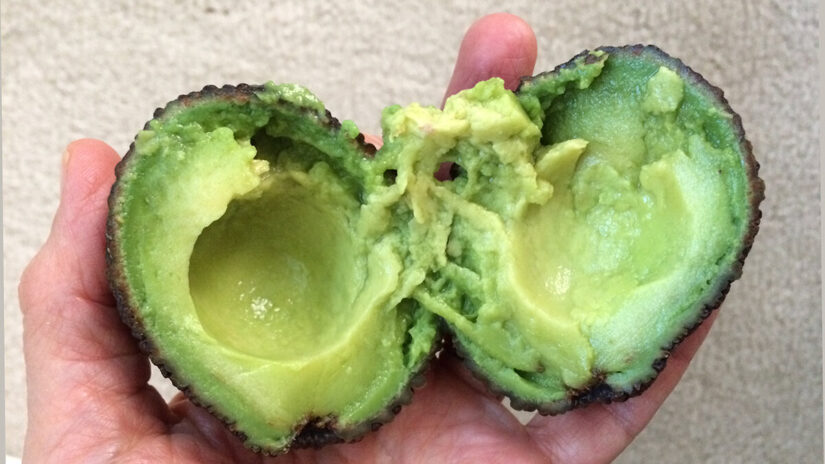Stringy Avocado Secrets: Unleash Culinary Brilliance
Do you want to turn a seemingly challenging ingredient into a culinary marvel? Welcome to the world of stringy avocados! These peculiar avocados might appear unappealing at first glance, but with the right techniques and a sprinkle of creativity, they can transform into gastronomic wonders.
Understanding the Stringy Avocado
First things first, what exactly is a stringy avocado? These avocados are typically ripe yet have an unusual texture, often characterized by fibrous strands running through the flesh. While some may consider them less desirable, these avocados hold immense potential for culinary exploration.
- Stringy avocados, often misunderstood, hold immense potential in the kitchen. Ripe yet challenging, their fibrous texture poses a creative challenge for chefs and home cooks alike. Unraveling the mystery of these avocados begins with understanding their unique characteristics;
- Characteristics of Stringy Avocados. The stringy avocado, unlike its smoother counterparts, displays fibrous strands within its flesh. These strands, while causing some to hesitate, offer a distinctive texture and taste profile. The strings can range from subtle to pronounced, and they typically appear in avocados that are ripe or slightly overripe;
- The Culinary Conundrum. At first glance, the presence of strings might discourage you from using these avocados. However, they can be a source of creativity in the kitchen. Learning to work with stringy avocados opens doors to inventive recipes and unique textures
When choosing stringy avocados, seek fruits that yield gently to pressure without being overly soft. These avocados may not visually differ significantly from smoother ones, but their texture sets them apart.
Selection and Ripening
When selecting stringy avocados, look for ones that yield slightly to gentle pressure. Avoid avocados with noticeable dark spots or overly mushy areas. To ripen them, place them in a paper bag with a banana or an apple. These fruits release ethylene gas, hastening the ripening process. Check the avocados daily until they reach the desired level of ripeness.
Handling and Preparation Techniques
Now, let’s dive into the art of handling and preparing stringy avocados:
- Slicing Technique: To tackle the strings, opt for a different slicing approach. Instead of halving the avocado, try cutting it into quarters. Remove the pit carefully and peel the skin off each quarter. This method minimizes the exposure to the strings, making it easier to remove them;
- Mashing and Blending: For dishes like guacamole or avocado-based sauces, using a blender or food processor can help break down the strings, resulting in a smoother texture. Consider adding a dash of lime or lemon juice to enhance the flavors while you blend;
- Straining Method: If you’re seeking a silky texture, strain the mashed avocado through a fine-mesh sieve. This separates the strings, leaving behind a velvety puree ideal for dressings or dips.
Heat can work wonders in taming stringy avocados. Grilling or roasting them can help soften the strands, transforming them into a caramelized delight perfect for salads or as a side dish.
Culinary Inspirations
Let’s explore the endless possibilities these stringy avocados offer:
- Avocado Pasta: Toss cooked pasta with mashed avocado, garlic, olive oil, and your favorite herbs. The strings will intertwine with the pasta, creating a unique texture;
- Avocado Fries: Coat slices of avocado in breadcrumbs or almond flour and bake them until crispy. The strings inside soften, complementing the crunchy exterior;
- Avocado Desserts: Use mashed avocados in desserts like puddings or ice creams. The strings melt into the creamy base, adding a delightful richness.
Spread mashed avocado on toast, and top it with roasted vegetables or a poached egg for a breakfast or brunch option with a delightful contrast in textures.
Why do overripe avocados get stringy?
The stringiness found in overripe avocados is primarily due to changes in the fruit’s cell structure as it becomes overly mature. When an avocado ripens beyond its prime, the breakdown of its cell walls occurs, leading to the development of fibrous strings within the flesh.
Several factors contribute to this stringiness:
- Cell Wall Breakdown: As the avocado ripens, enzymes such as cellulase and pectinase break down the cell walls, causing the avocado flesh to soften. However, when the fruit becomes excessively ripe, these enzymes continue to break down the cell walls more extensively, leading to the formation of fibrous strands;
- Varietal Differences: Different avocado varieties exhibit varying degrees of stringiness when overripe. Some varieties are more prone to developing strings as they become excessively mature;
- Storage Conditions: Improper storage or prolonged exposure to ethylene gas, which is released by fruits like apples and bananas and accelerates ripening, can hasten the overripening process. This can result in avocados becoming too ripe and developing stringy textures;
- Temperature and Humidity: Avocados are sensitive to temperature and humidity changes. Incorrect storage conditions, such as being stored at too high or too low temperatures, can accelerate the ripening process and contribute to stringiness.
While stringiness might make avocados less visually appealing and slightly more challenging to work with, they can still be used in various culinary applications. With creative techniques and recipes, overripe or stringy avocados can still be transformed into delicious dishes, ensuring they don’t go to waste.
In finale
Stringy avocados may seem daunting at first, but with a bit of creativity and the right techniques, they can be a secret weapon in your culinary arsenal. Embrace their uniqueness, experiment fearlessly, and unlock the delicious potential hidden within these misunderstood fruits. Whether in savory dishes or sweet treats, let the strings weave their magic into your creations. Enjoy the journey of discovering the wonders of stringy avocados!
